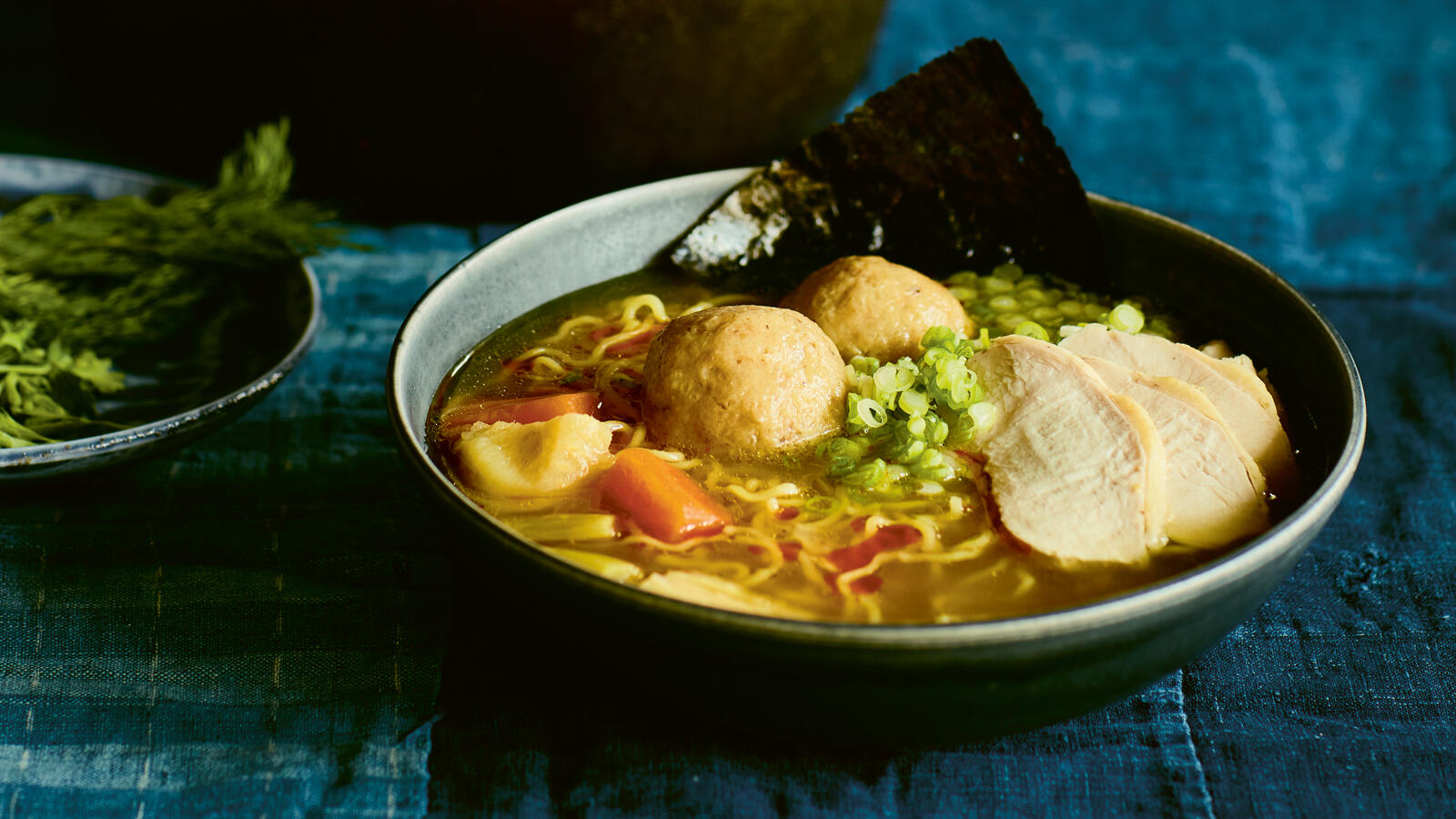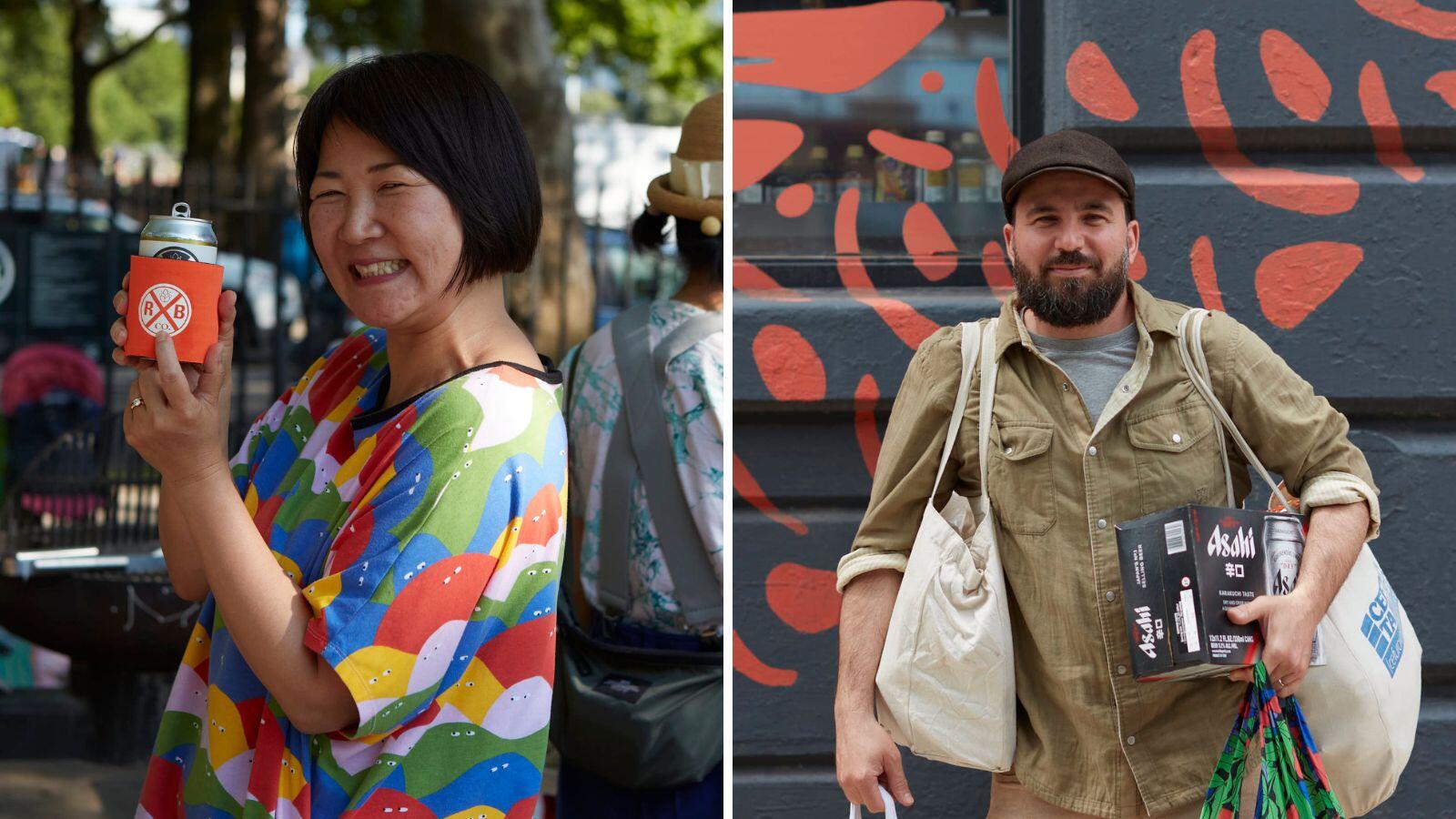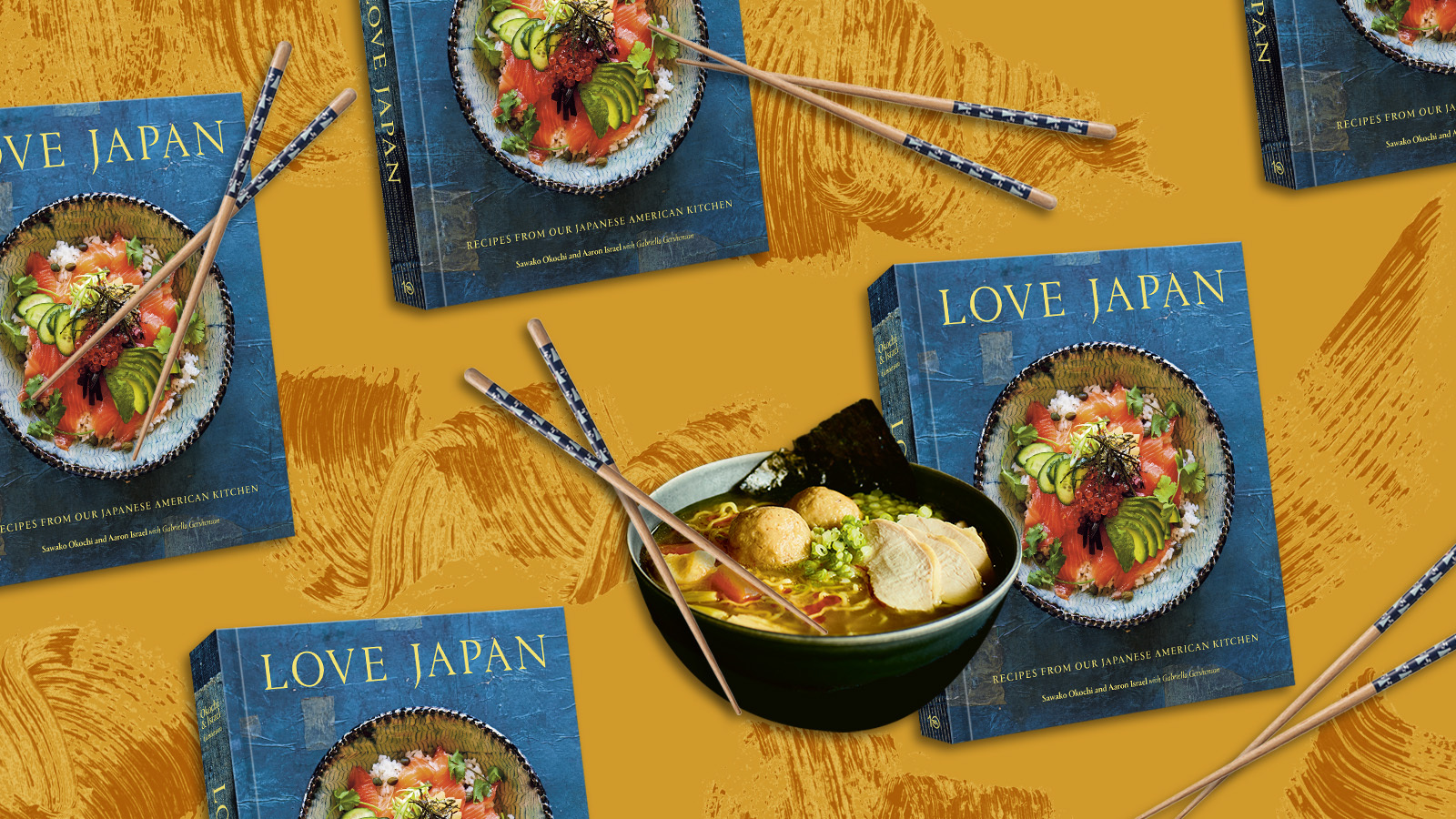The cover of “Love Japan,” the newly published cookbook by chefs Sawako Okochi and Aaron Israel, together with food journalist Gabriella Gershenson, is emblematic of the chefs’ union. It is a photo of a “Lox Bowl,” a dish that the couple created.
You may recognize Okochi and Israel as the owners and founders of a Williamsburg, Brooklyn restaurant with an unusual name: Shalom Japan. Once you know the backstory, the name makes sense: Okochi was raised in Hiroshima, Japan; Israel is an Ashkenazi Jew who grew up on Long Island in New York State. Two years after their first date (in a Chinese restaurant, no less!), they opened Shalom Japan, where the couple combined their culinary backgrounds to create a unique menu.
The Lox Bowl is one of the two most popular dishes at Shalom Japan and has been on the menu since it opened 10 years ago. On the book’s cover, it’s served in a light blue bowl sitting on a dark blue background. The bowl is filled with deep orange slices of lox nestled on a bed of white rice, covered with slices of cucumber, avocado, sprigs of cilantro, crowned with a dollop of salmon roe and shredded nori (a dried seaweed), and sprinkled with capers.
The couple first built the lox bowl on a Sunday morning in Manhattan.
The Nosher celebrates the traditions and recipes that have brought Jews together for centuries. Donate today to keep The Nosher's stories and recipes accessible to all.
“We started making that dish together long before we had the restaurant,” Israel told The Nosher. “As a Jewish guy growing up on Long Island, my dad would get bagels and lox on Sunday. For me, lox goes on a bagel. When I met Sawa she said that we have a lot of cured salmon in Japan. It became a conversation. What do YOU do with it? What do I do with it?”
That dialog, said Israel, “was a jumping-off point.”
The couple have also included a recipe for their popular Home-Style Matzoh Ball Ramen in the book. Israel wanted to serve matzah ball soup at the restaurant because his mom’s version was one of his favorite foods growing up.
“I would put a whole bag of Manischewitz noodles in the bowl, to make a whole meal out of it,” said Israel. Similarly, he wanted Shalom Japan’s soup to be more of a main course than an appetizer. It was Okochi’s idea to use ramen noodles.
“Boom! My head exploded! I hadn’t thought of it. That was it. We never looked back,” said Israel.
The soup is flavored with kombu (a dried kelp) and ginger, filled with vegetables, matzah balls, slices of chicken breast, and topped with thinly sliced scallions, chili oil and a piece of nori. His mom, said Israel, loves it and orders it all the time.
The recipe in “Love Japan” is a pared-down version of the soup served at the restaurant, more similar to the way Okochi and Israel cook it at home, writes Israel. This is characteristic of the book, which is made up of foods the couple makes for themselves, their children and their friends at home. Some of the very complicated foods on their restaurant menu, like Wagyu Pastrami, which calls for two weeks of refrigerator brining followed by smoking, are not included. Most of the recipes in “Love Japan” can be quickly assembled if you have a basic Japanese pantry on hand. They detail that list, which includes staples like dashi powder, Japanese white rice and tsukemono (Japanese pickles), and direct you to where to find the ingredients and how to use them in the start of the book.

Lox Bowl and Matzoh Ball Ramen aside, most recipes in the cookbook do not have such distinctly Jewish elements. “Love Japan” is, said Gershenson, “a Japanese home cooking book” — not the restaurant’s cookbook and not a Jewish cookbook, which is why the team opted to name the cookbook “Love Japan” rather than “Shalom Japan.”
“Aaron came up with the title,” said Gershenson. “The book is really a love letter to Japanese food. A love letter to love and the power that love has to beget more beautiful things. Everything about their lives, like the restaurant and the recipes, is all a product of the fact that two people met and decided to integrate their lives together. Their love language is food because they are chefs,” continued Gershenson.
“‘Love Japan’” said Israel, “is our story, our love of each other, and our love of Japanese food.”

Nonetheless, said Gershenson, the book “does have elements of other cultures, including Aaron’s, and I think that the Jewish influences have made their way into the book.”
When Gershenson was first hired to work with the couple, they showed her “a commonality of many of the flavors and ingredients” within the two cuisines.
“Take buckwheat, for instance,” said Gershenson. “In the Ashkenazi repertoire, you have kasha varnishkes, which is pretty iconic. Soba noodles, also made of buckwheat, are an elemental part of Japanese cuisine.”
Jeffrey Yoskowitz, a co-founder of Gefilteria and a friend of Gershenson, weighed in, too. Horseradish with gefilte fish, he told Gershenson, is similar to sushi with wasabi. And in both Japanese and Ashkenazi Jewish food cultures there is a lot of pickling going on. “Once you see those overlaps, the food that they make in the restaurant and those you will see in the book makes a lot of sense,” said Gershenson.
“In the Jewish culture,” said Gershenson, “there is an osmosis of ideas and tastes that is constantly happening. I think in a broader sense this book is a microcosm of that, even though it isn’t about the Jewish and Japanese food that you have at Shalom Japan. You have to acknowledge the influence of cooking food from your native country, in your new adopted country.”



